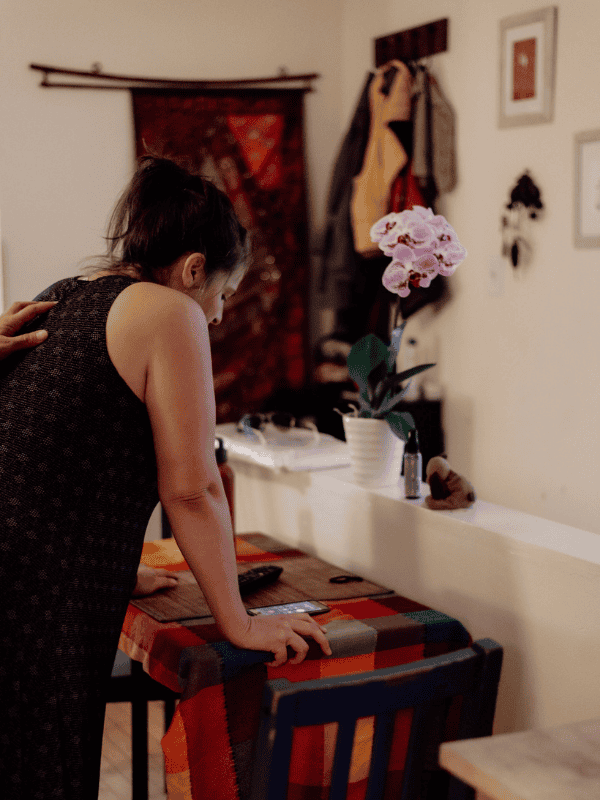
Physiological birth is a term gaining popularity on the internet as more people share their homebirth stories on social media, celebrities including. Is it simply a fleeting fad? I don’t believe so. I believe it is a return to our innate design and a reclamation of our power and of sacred familial celebrations. When I was first exploring birth outside of the medical system, I felt as if I were the only one. I now see more familiar faces choosing this journey, and it makes me overjoyed to see families having positive, gentle experiences.
What is physiological birth?
Merriam-Webster Dictionary’s definition for physiological is “characteristic of or appropriate to an organism’s healthy or normal functioning”. In more simple words, “physiological” describes a bodily process t naturally works when it is healthy. Pregnancy, labor and birth are all a part of the physiological process of reproduction, the processes that the body innately carries out to create, grow, birth, and nourish a baby. The goal of physiological processes is to maintain a constant state of homeostasis, which is “a self-regulating process by which biological systems maintain stability while adjusting to changing external conditions”, defined by George E Billman. In simpler terms, our body carries out countless physiological processes daily to keep our body in a state of balance and alive.
What are other physiological processes that our body facilitates daily? Breathing, digesting, excreting, and detoxing are a few examples of physiological processes that our body facilitates. Physiological processes do not require intent or control. Our body is innately designed to carry out these processes automatically. In fact, physiological processes continue to seamlessly perform, childbirth included, in people who are in comas. We don’t fear our other physiological processes… so why do we fear childbirth?

Why is this important to know?
Our society has created so much fear surrounding childbirth through media and horrific stories from industrialized, institutionalized birthing in the medical system. People assume that their experiences in the medical system accurately reflect physiological birth, when in reality, they experienced the survival of physiological birth in spite of reckless management by the medical system. People assume that childbirth is extremely dangerous, when logically—why would we be designed with a self-destructive process, when the survival of our species depends on the success and the repetition of this process? To put it bluntly, why are the reproductive physiological processes of sexual intercourse, of pregnancy, of breastfeeding enjoyable and satisfying, but childbirth is not?
As a mother who experienced all of the above physiological processes in enjoyable and satisfying ways, childbirth included, and as a birth worker, having witnessed others experience pregnancy, childbirth, and postpartum in the same way, I’ve come to the understanding that the less our physiological processes are controlled, managed, and pathologized, the more we enjoy them. The depictions of childbirth we’ve seen and heard of in our society are not accurate representations of childbirth as it was designed.
Now, my intent is not to sell you a fairytale version of birth that is easy and painless—although for some it is. My intent is to reveal to you that although often intense, uncomfortable, and painful, physiological birth in the right environment can simultaneously be enjoyable, satisfying, and even pleasurable. And that there are a myriad of benefits for the mother, the baby, and even the family, when physiological birth is preserved and honored.
What are the implications of medicalized birth?
In our hyper-medicalized society, we are seeing induction rates and cesarean section surgery rates rising. This is deeply alarming. The survival of our species depends on the preservation of physiological birth. Choosing to birth outside of the medical system is no longer just an alternative birthing plan. It is a battle cry and an attack on a model of “care” that is killing the human race.
This may seem extreme, but the implications of decreasing rates of physiological births are extreme. As childbirth becomes more medicalized and requires more assistance, we may lose the capability—the biological resilience and structural ability—to birth without assistance. Abnormal traits that would’ve naturally resolved through evolutionary pressure are bypassed instead of addressed, allowing them to be passed on. Synthetic hormones, such as Pitocin, and birth stress may alter gene expression (epigenetics), immune function, stress resilience, and bonding between the mother and baby across generations. Disrupted hormonal blueprints may affect a woman’s own future birthing ability and her child’s hormonal regulation.

Babies born surgically and/or exposed to antibiotics lack essential microbial seeding, impacting the microbiome generationally. Medicalized and industrialized birth leads to an increase in health issues for children, such as autoimmune diseases and chronic inflammatory disorders. The hormonal and neurological experiences of birth impact how babies perceive safety, love and stress. These early imprints influence the adult nervous system, parenting patterns, and societal norms. As birth becomes more sterile, systematic, and clinical, what imprint does that leave on the psyche of humanity?
Rising intervention rates may increase institutional control over birth: with who, where, when, and how families are allowed to birth. This may jeopardize bodily autonomy. Cesareans may be used to control populations, enforce policies, and profit from over-medicalization. The overuse of interventions increases healthcare costs and resource demands, diverting funds from preventative and community-based care.
Women are losing trust in their bodies and instincts, and placing blind trust in authority figures who lack training in physiological birth. As less women experience the transformative power of physiological birth, female culture shifts to helplessness, fear, and fragility, not only in childbirth, but in motherhood as well. This leads to mothers outsourcing their motherly instincts in child rearing to authoritative figures, repeating the cycle from their medicalized birth.
As physiological birth becomes rare, birth becomes a medical event instead of a rite of passage. It is no longer a familial ceremony, witnessed by close sisters, mothers and grandmothers who all honor the process. Traditions of postpartum care, storytelling and generational support fade, unraveling the communal tapestry that has historically nurtured and protected mothers and babies in early motherhood.

Conclusion
Women are returning to physiological birth not just for themselves, but for their future generations as well. Their eyes are set on a future where birth is revered and welcomed. Where communities come together to support every mother, without bringing fear. Where women solely heal from the intensive perinatal journey—not additionally from the trauma from medicalization, mistreatment and unnecessary interventions. To choose physiological birth is to choose a reclamation, a returning, a community, a celebration, health, and prosperity in the human race.
